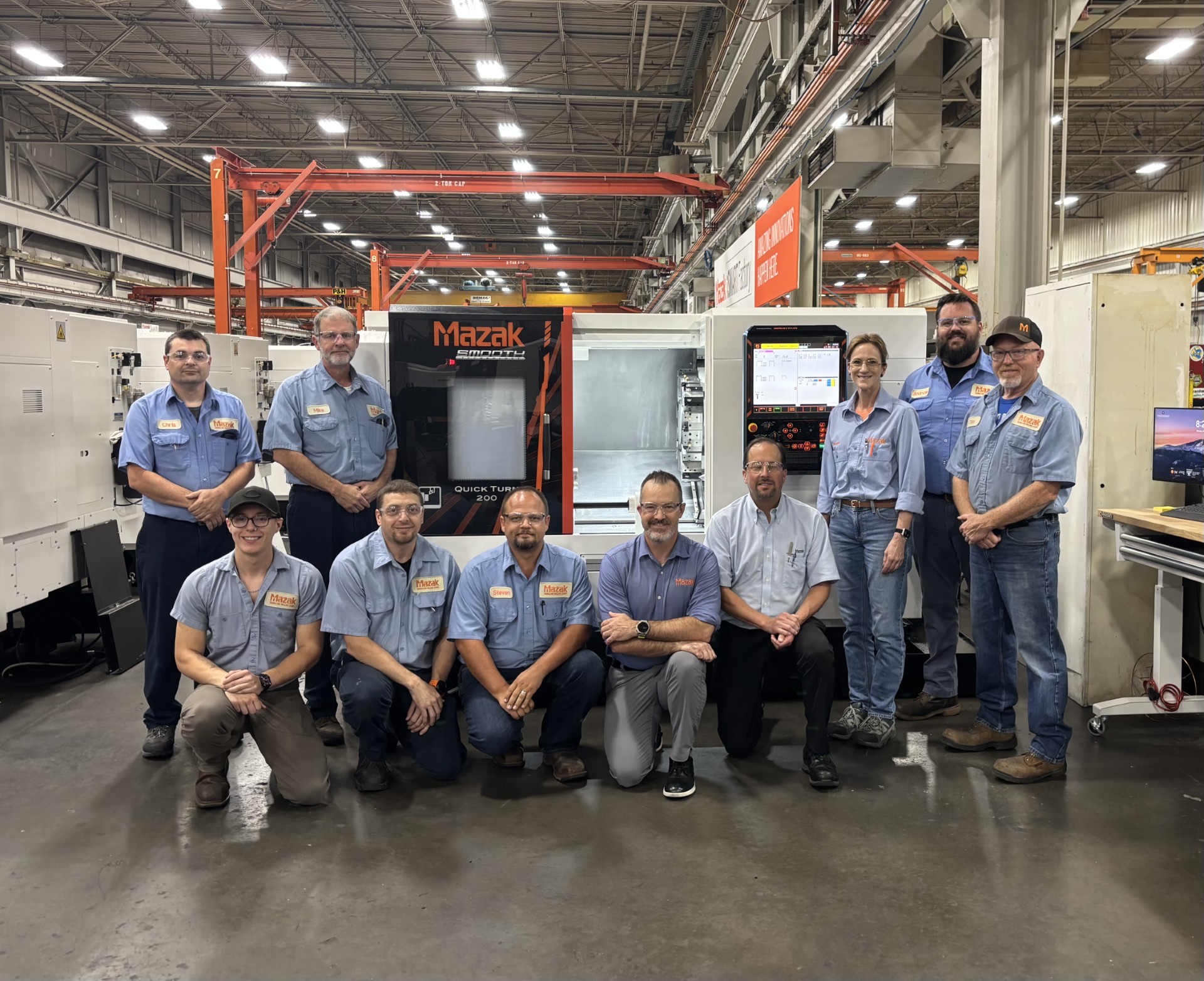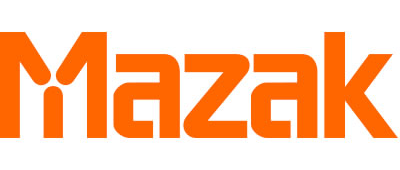
Mazak built its 40,000th machine at the company’s Mazak iSmart Factory in Florence, Kentucky. The 518,320-square-foot facility, situated on Mazak’s nearly 1-million-square-foot manufacturing campus, produces many of Mazak’s most popular machine models, including its Quick Turn Series machines, VTC Series machines, and Ez Series of turning and milling centers. It is home to the company’s U.S. manufacturing technology R&D efforts.
Mazak designated the facility as a Mazak iSmart Factory because it fuses advanced manufacturing cells and systems together with full digital integration to achieve free-flow data sharing in terms of process control and operation monitoring. At the facility, the company manufactures industry-leading Multi-Tasking machines, 3, 4 and 5-axis Vertical Machining Centers, 2 and 3-axis Turning Centers and Swiss-style machines along with Hot Wire Deposition and Friction Stir Welding enabled machines.
The year 2024 marked another significant production milestone for Mazak. The company celebrated its 50th Anniversary of North American manufacturing operations in Florence, Kentucky. Since the start of operations, Mazak has expanded the facility 20 times, and as the facility has grown, it continually contributed to the economic vitality of both the state of Kentucky and the local area while reinforcing the fact that world-class machine tools are still being produced in America.
Manufacturing close to its customers allows Mazak to provide immediate, tangible benefits in terms of productivity and performance to its customers. As a manufacturer itself, Mazak is uniquely positioned to understand the challenges those in manufacturing face on a daily basis and, as a result, can quickly develop and produce high-quality machine tools that effectively meet current industry needs.
From the moment it started the Kentucky production operations, Mazak further expanded its Kentucky production portfolio and continuously evolved its manufacturing operations and the products produced. As a result, Mazak has maintained a leadership position and has brought a world of technological firsts to the industry, from the company’s Multi-Tasking DONE IN ONE® machine concept to advanced digital solutions, innovative automation systems and more.
The development of more than ten Mazak CNC controls is yet another result of the company’s commitment to product improvement and evolution. That evolution started with the Mazak Mazatrol T1 control back in 1981, then the first conversational CNC for turning machines, which took the industry by storm. The Mazatrol CNC evolution has progressed with Mazak’s recent development of Smooth Technology that encompasses a range of CNCs, some of which incorporate artificial intelligence (AI) along with machine monitoring and learning capabilities.
The Kentucky manufacturing campus is also home to the company’s Spindle Repair & Rebuild Department that keeps existing Mazak machines in the field up and running and extends their operational lifespans. According to the department’s head Matt Whissel, Mazak’s spindle service provides shops with quick three- to five-day turnaround times, and the department can rebuild/remanufacture any spindle the company produces, even those manufactured as far back as the 1970s.
Today, Mazak continues to demonstrate its ongoing commitment to U.S. manufacturing not only through the consistent development and production of highly advanced machine tool technology, but by its investments in the company’s manufacturing plant. With each investment, Mazak increases its capacity for product development and production as well as its responsiveness to customers in industries ranging from contract manufacturing, energy, aerospace and defense to construction and agriculture equipment, automotive and medical.
Contact Details
Related Glossary Terms
- centers
centers
Cone-shaped pins that support a workpiece by one or two ends during machining. The centers fit into holes drilled in the workpiece ends. Centers that turn with the workpiece are called “live” centers; those that do not are called “dead” centers.
- computer numerical control ( CNC)
computer numerical control ( CNC)
Microprocessor-based controller dedicated to a machine tool that permits the creation or modification of parts. Programmed numerical control activates the machine’s servos and spindle drives and controls the various machining operations. See DNC, direct numerical control; NC, numerical control.
- gang cutting ( milling)
gang cutting ( milling)
Machining with several cutters mounted on a single arbor, generally for simultaneous cutting.
- milling
milling
Machining operation in which metal or other material is removed by applying power to a rotating cutter. In vertical milling, the cutting tool is mounted vertically on the spindle. In horizontal milling, the cutting tool is mounted horizontally, either directly on the spindle or on an arbor. Horizontal milling is further broken down into conventional milling, where the cutter rotates opposite the direction of feed, or “up” into the workpiece; and climb milling, where the cutter rotates in the direction of feed, or “down” into the workpiece. Milling operations include plane or surface milling, endmilling, facemilling, angle milling, form milling and profiling.
- process control
process control
Method of monitoring a process. Relates to electronic hardware and instrumentation used in automated process control. See in-process gaging, inspection; SPC, statistical process control.
- turning
turning
Workpiece is held in a chuck, mounted on a face plate or secured between centers and rotated while a cutting tool, normally a single-point tool, is fed into it along its periphery or across its end or face. Takes the form of straight turning (cutting along the periphery of the workpiece); taper turning (creating a taper); step turning (turning different-size diameters on the same work); chamfering (beveling an edge or shoulder); facing (cutting on an end); turning threads (usually external but can be internal); roughing (high-volume metal removal); and finishing (final light cuts). Performed on lathes, turning centers, chucking machines, automatic screw machines and similar machines.

